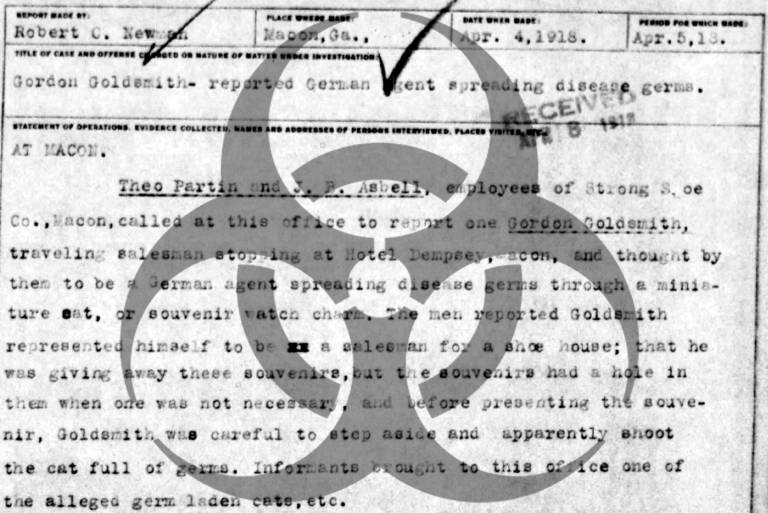VIRTUAL EVENT: Looking for the Invisible Enemy: The Threat of Biological Warfare
24 November 2020, 1:00 pm–2:00 pm

This lunch hour lecture will examine the threat of biological warfare and the 1918-19 Influenza Pandemic.
This event is free.
Event Information
Open to
- All
Availability
- Yes
Cost
- Free
Organiser
-
Sanaa Al-Busaidy
About the lecture:
During the end stage of the First World War, suspicions spread in the Allied countries that the germ behind the 1918-19 ‘Spanish flu’ pandemic was in fact some form of German bioweapon – possibly launched in a desperate attempt to gain strategic advantage as Germany was sliding towards its eventual defeat.
These suspicions resonated strongly with members of the public trying to understand the pandemic. Sometimes. they were also thought to be plausible by civil and military authorities. A variety of threat images emerged, ranging from enemy submarines to aspirin tablets, bars of soap, squirrels and a miniature toy cat.
These old conspiracy theories provide an interesting parallel to the current claims that COVID-19, too, is some sort of a bioweapon that escaped from a ‘Chinese lab’. Furthermore, the anti-German hysteria and germ scares of 1918 are comparable to today’s ‘corona racism’, and suspicions that objects such as 5G cell-towers might be spreading the virus.
About the Speaker
Dr Mart Kuldkepp
Associate Professor in Scandinavian History and Politics at UCL
Dr Mart Kuldkepp is Associate Professor in Scandinavian History and Politics at UCL’s Department of Scandinavian Studies. He defended his PhD dissertation on Estonia’s Nordic identity in the First World War at University of Tartu in 2014 and joined UCL in 2015. His primary field of research is Baltic, Nordic and European political history in the first decades of the 20th century. He has published on Swedish attitudes towards the idea of Baltic independence, plans for Scandinavian involvement in the First World War etc. He is currently working on a book about biological warfare and the 1918-19 influenza pandemic.
 Close
Close

